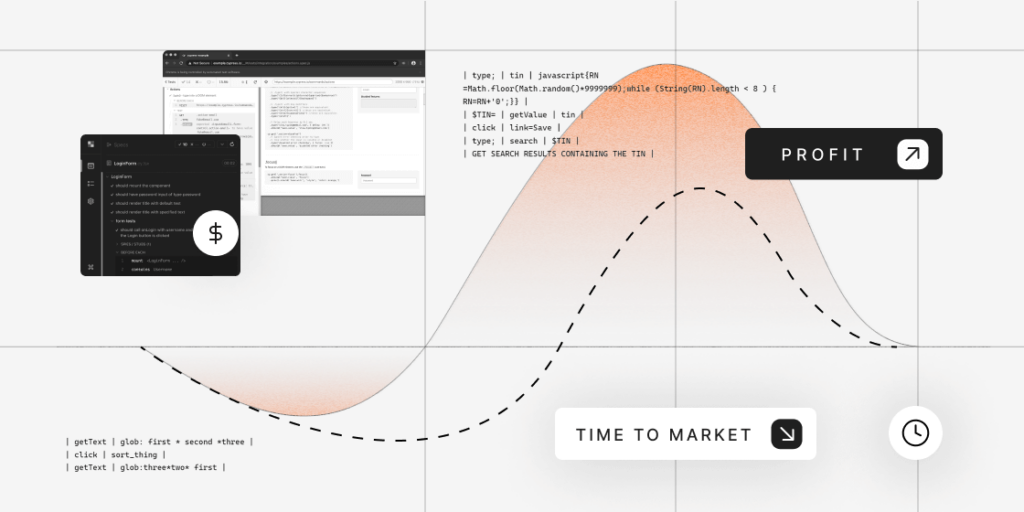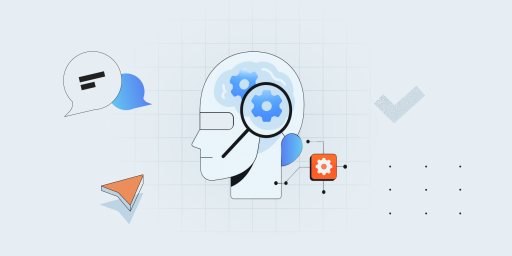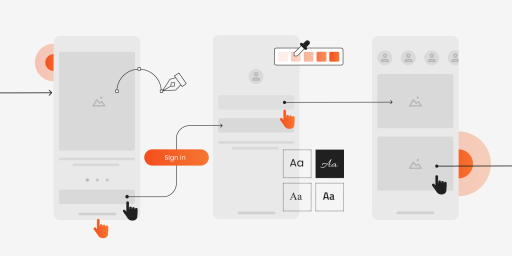We won’t go as far as saying that some testing types are more important than others, but functional testing definitely stands out among other QA activities simply because of how vital it is. Without properly working functionality, even the most brilliant UX or universal compatibility of a software product are not going to be worth much. Join us as we’re taking a closer look at functional testing automation and its place in modern QA.
What Is Functional Testing?
Functional testing is a type of testing designed to validate a software product according to the specifications and requirements outlined in the documentation. In other words, functional testing is meant to check the functionality of the product to make sure it’s all there and working as expected. Functional testing is an integral part of quality assurance and is often the first type of testing performed on a new or recently updated product.
Different Types of Functional Testing
While functional testing is an important type of testing in its own right, it is also frequently used as an umbrella term for several types of software testing that have to do with the product’s functionality that may not necessarily be listed among its features. Functional automated testing involves different activities within the development cycle that can be performed on a website, web application, mobile application, and many other types of software. These are the main types of functional testing:
- Sanity testing, which happens before the release of a new software build, following bug fixes or other changes to the code, and focuses on a particular feature of a product instead of the overall solution.
- Smoke testing — this type of testing involves checking only the most essential functionality of the product and takes place after a new build is completed; a passed smoke test means the product is ready for further testing.
- Unit testing — a type of testing that deals with the smallest fragments of software, or units, to see if they work as expected; this type of testing ensures a strong foundation for more complex testing activities.
- System testing — a type of testing that checks the system as a whole instead of focusing on its individual components. System testing is also referred to as end-to-end testing and is the final stage before user acceptance testing.
- Integration testing — a type of testing related to unit testing but designed to test the way different software units interact with each other and the system as a whole. It’s especially important when using software units developed by different teams.
- Performance and load testing — this type of testing is needed to ensure that the solution can successfully operate not just in the testing environment, but also in real-life conditions with unpredictable load spikes. Performance and load testing often need to be automated because testing without automation can take too many resources.
- Regression testing — a way to verify the functionality and performance of a software solution following a change to the code. It’s intended to make sure that the solution works as intended and was not negatively affected by the changes.
Functional Testing vs. Automated Testing
Functional and automated testing are not some polar opposites like the nature of the comparison would imply. Functional testing can be both automated, where it overlaps with automation testing, and manual, where it can be viewed as its antipode. However, both functional and automated testing have the shared goal of ensuring the quality of a software product, and can deliver even more impressive results when used simultaneously. This is why custom automated functional test services are such a growing trend among software companies.
Functional vs. Non-Functional Automation Testing
To be successful at automated functional tests and get exactly what you want from them, it’s important to understand the key differences between automating functional and non-functional testing. Here is how these two testing areas are different and when each one is needed.
| Feature | Functional Testing Automation | Non-Functional Testing Automation |
| Purpose | Validate software’s functionality against requirements. | Evaluate system performance and quality attributes (speed, scalability, security). |
| Focus Areas | Business logic, user actions, and specific features. | Performance, load handling, security, usability, and stability. |
| Question Answered | “Does this feature work as expected?” | “How well does the system handle X condition?” |
| Automation | Used to quickly validate core business functionalities. Test scripts simulate user behavior to ensure that the system behaves as expected. | Focuses on evaluating how the system performs under specific conditions. Often involves stress tests or performance monitoring. |
| Popular Tools | Selenium, TestComplete, Cypress, Appium. | JMeter, LoadRunner, Neoload, Burp Suite. |
| AI Involvement | Can assist in self-healing test scripts, auto-generating tests, and reducing false positives in functional automation. | Can predict performance bottlenecks, simulate more realistic user behavior under load, and improve test analysis and reporting. |
| When to Use | Should be done early and continuously throughout the development lifecycle (Shift Left). | Performed after functional testing when the system is stable, near the end of the development cycle. |
Why Go for Automated Functional Testing
Why Go for Automated Functional Testing
The decision to do functional testing automation should never be taken on a whim, even when you have an experienced automation developer at hand. In order for the whole team and project stakeholders to become fully invested, they need to properly understand the benefits of doing it. Here are just some of the reasons why functional automation testing should be considered:
- Better coverage. Automated software testing saves the team time they can spend on exploring the remaining parts of the application and covering them in their tests.
- Continuous testing. With a well-designed automated testing routine, you don’t have to rely solely on the outcome of manually testing the solution and can test the application over an extended period of time.
- Streamlined feedback. If necessary, you can set up your automation tool to deliver feedback after every iteration, keeping you up to date with the state of the app.
It’s important to understand that 100% functional testing automation isn’t just unachievable — it is also unnecessary. There are certain types and areas of testing that can only be performed manually. For example, while it’s possible to automate UI testing, certain interactive elements can only be tested with manual input. Similarly, teams usually automate regression testing, while acceptance testing can only be done manually. So there is no need to try and cover everything just for the sake of it.
How to Choose the Perfect Automated Functional Testing Tool
Whether you’re looking to automate your first-ever functional testing project or are simply looking for ways to make the process more efficient and time-saving, the selection of tools can have the most dramatic impact on the success of your project. Here are a few things to take into account:
- Project goals. Here you and your team need to think about what exactly you want to automate and what you want to accomplish in the end, as there are lots of specialized tools for particular types of projects.
- The team’s technical skills. If you’re planning to complete the project using only available resources, you should have a complete idea of what your team is capable of: whether they can use coding to automate tests and whether they already have some experience with certain tools.
- Project budget. The options here are simple: whether you can pay for a licensed tool or need open-source solutions. Both options are valid, and it’s usually possible to run the whole project using open-source tools, but at the end of the day, the choice depends on what you want to achieve.
- Capabilities and limitations of the tool. Some tools may only support certain languages or environments, and there needs to be a match between the tool’s limitations and the characteristics of the project.=
- Integration opportunities. Unless you are launching a small-scale project, you may need to use two or more tools in addition to the systems your team already employs on a regular basis. This is why you also need to plan for potential integrations.
Make sure to check out our guide on automation testing tools to find out more about the most popular solutions and how to find the right tool for your next project and whether tools like Selenium, Appium, and Ranorex are a good choice for implementing automated testing techniques.
When to Do Functional Testing Automation and Who Should Do It
Functional automated testing is a critical component of ensuring software quality. To maximize its benefits, it’s essential to time its implementation correctly within the software development lifecycle and assign the appropriate team members to execute it. Here is a quick guide to when functional testing automation should be done and who should be responsible for it.

Manual and Automated QA for a Software Testing Automation Tool
When to Do Functional Automation Test Checks
Functional testing automation is such a versatile approach that it is possible to find appropriate uses for it at most stages of the software development process. These are the phases where it makes the most sense and leads to the best possible outcomes.
Early in the development process (Shift left testing)
Functional test automation can be introduced as early as unit testing or integration testing phases. This helps in identifying issues with individual components or how they interact with other parts of the system. Early detection of bugs is less costly and prevents more significant issues from occurring later in development.
During CI/CD pipelines
Functional test automation should be integrated into your CI/CD pipeline to ensure that every code change is tested as part of the build process. Automating regression tests ensures that newly added or modified code does not break existing functionality, leading to faster, more reliable releases.
After major code changes or new features
Every time a new feature or functionality is added to the application, automated functional tests should be written and executed to ensure the new feature works as intended. This provides immediate feedback on new functionality, reducing the risk of bugs slipping into production.
Before software releases
Comprehensive automation functional testing should be done before any major software release to ensure that the core functionalities of the system are working correctly. It reduces the risk of post-release issues and ensures that key business functions are intact.
During maintenance or bug fixes
When fixing bugs or making minor updates, running automated smoke and sanity tests ensures that the overall system still functions correctly after small changes. This approach ensures early detection of unintended side effects of fixes or updates.
Who Should Do Functional Test Automation
QA engineers with automation expertise. Automation engineers or QA engineers with experience in test automation should be the primary individuals responsible for creating, maintaining, and executing automated tests. They work closely with developers to ensure that tests align with the functionality being built and follow the development cycle.
Developers. Under the test-driven development and behavior-driven development approaches, developers can contribute to functional automated testing early in the development process by writing unit and integration tests. This ensures that the code is tested for functionality right from the development stage, leading to higher-quality code.
External test automation specialists. If you don’t have an in-house team of automation engineers, external specialists may be an equally strong option. There are companies providing automated functional testing services on a professional basis, meaning they have both the specialists and the infrastructure to deliver the anticipated results quickly without putting any additional strain on your in-house operations.
Manual testers. When transitioning to automation testing, manual testers who have deep functional knowledge of the application can work closely with automation engineers to define test scenarios and identify high-priority test cases for automation. While manual testers may not create automation scripts, they play a crucial role in ensuring that automated tests cover all essential functionality.
How to Do Functional Test Automation: 10 Must-Know Tips & Best Practices
Having already talked about different aspects of functional test automation, we are now going to look at how to further increase the efficiency and improve the results of functional automation testing. Here are the tips for making the most of your functional testing automation project.
1. Start Small and Scale as You Go
Automate high-priority or repetitive test cases that have the most impact on the functionality of the software. Avoid trying to automate everything at once, and begin with critical cases that have the biggest impact on functionality. Starting with smaller, well-defined test suites and expanding over time as the automation framework matures creates effective, manageable testing projects.
2. Pick the Right Testing Solutions
Choose tools based on your tech stack, testing methodologies, application type (web, mobile, or desktop), and team’s skill set. For example, popular choices include Selenium for web applications, Postman for API testing, Appium for mobile apps, and Cucumber for applications based on Java. Also, ensure the tool you go for seamlessly integrates with other tools in your CI/CD pipeline, supports multiple platforms, and offers scalability.
3. Create Automated Scripts That Are Reusable
Take the modular approach by breaking tests into small, independent modules or functions that can be reused across different test cases. This reduces maintenance effort in the long run. Moreover, it’s a good idea to give your test cases meaningful names that reflect the specific functionality being tested. Finally, consider implementing a data-driven test approach: parameterize your test scripts to run multiple data sets, reducing the number of scripts and making tests easier to maintain.
4. Test Early and Continuously
Integrate testing early in the SDLC by incorporating automated tests as part of the development process to catch issues early and reduce the cost of fixing bugs. Run automated tests frequently, especially after every new feature and code change as part of a CI/CD pipeline to ensure rapid feedback. This is also known as the shift-left approach, which can be an excellent addition to your software testing process.
5. Focus on Stability
Ensure test scripts are resilient to changes in the application’s UI or functionality. Unstable tests can produce false positives and negatives, reducing confidence in automation. Moreover, if your tool supports it, leverage AI-driven self-healing scripts to automatically adjust when minor changes in the UI occur, reducing manual intervention.
6. Maintain a Clean Testing Environment
Ensure that test data is independent of production data and can be reliably reset for every test run. To create consistent testing environments, use containers or virtual machines to standardize the test environment across different teams and platforms. This ensures test consistency and reduces the “works on my machine” issue.
7. Collaborate with Development Teams
Developers should collaborate with testers to ensure that automated tests are aligned with the code and architecture, making the process smoother and less prone to misunderstandings, and that should start as early as the development process itself. Moreover, just like production code, automated test scripts should be peer-reviewed for accuracy and maintainability.
8. Monitor and Analyze Test Results
Implement detailed reporting and logging mechanisms to understand test results quickly. Integrating with CI tools can send alerts or notifications for failed tests. When tests fail, ensure there’s enough logging and debugging information to identify the issue efficiently.
9. Achieve a Proper Manual/Automation Balance
Functional automation testing aims at lowering the dependence on manual testing, but getting rid of manual QA altogether is not the wisest decision. Avoid automating tests that are highly complex or rarely executed, as the cost may outweigh the benefits. Also, avoid automating tests that are highly complex or rarely executed, as the cost may outweigh the benefits.
10. Regularly Update the Test Suite
As the application evolves, regularly update your test scripts to ensure they remain aligned with the application’s current functionality. Refactoring tests is also a best practice with frequent testing: as the application evolves, regularly update your test scripts to ensure they remain aligned with the application’s current functionality.
Quality Assurance Services for Cryptocurrency Exchange Platform
The Use of AI in Automation Functional Testing
Artificial Intelligence (AI) is transforming the landscape of functional automation testing by improving efficiency, accuracy, and scalability. As applications become more complex, AI-driven tools and techniques help streamline testing processes, increase test coverage, simplify cross-platform and cross-browser testing, reduce manual intervention, and make test suites more intelligent and adaptive. Here are the key ways to use AI in functional automation testing to make it all happen.
1. Self-Healing Test Scripts
Traditional automation scripts are highly sensitive to changes in the application’s UI. Even minor updates can cause tests to fail, leading to significant maintenance overhead. AI-powered tools can detect changes in the application’s UI and automatically adjust or “self-heal” the affected test scripts without manual intervention. These tools use pattern recognition and machine learning to identify alternate locators or paths when elements are updated, preventing test failures caused by small changes.
As a result, uninterrupted testing, even when UI changes are frequent, becomes a possibility, ensuring higher test stability, while test scripts become more resilient and require less frequent manual updates.
2. Intelligent Test Case Generation
Writing test cases manually can be time-consuming and prone to human error, especially for large applications with numerous features and edge cases. AI algorithms can automatically generate test cases based on user behavior data, code analysis, and historical defects. by analyzing the application’s codebase, AI can identify untested areas and suggest test cases that improve test coverage. AI can also prioritize test cases based on risk, focusing on the most critical paths or functionalities that are more likely to fail.
Automatically generated test cases reduce the time spent on creating and maintaining scripts. Moreover, AI helps identify areas that are frequently overlooked by testers, leading to more comprehensive coverage.
3. Predictive Analytics for Test Optimization
In large projects, running the entire test suite after every code change is time-consuming and resource-intensive, leading to bottlenecks in continuous testing environments. AI-powered predictive analytics can analyze previous test runs, bug patterns, and code changes to predict which parts of the application are more likely to fail. AI-based tools can prioritize the execution of critical tests or suggest which tests can be skipped or delayed, optimizing the testing process.
As a result, the use of AI speeds up test execution by focusing on high-risk areas, reducing unnecessary testing time. It also helps identify and test areas with a higher probability of defects, leading to faster issue resolution.
4. Automated Test Maintenance
As software evolves, test scripts need constant updates to remain relevant, which can become a costly and time-consuming task. AI-powered tools continuously monitor the test environment and suggest updates to outdated or redundant test scripts. AI can also remove obsolete tests and identify opportunities to combine or refactor test cases, streamlining the overall test suite.
Consequently, AI minimizes manual updates and ensures that test scripts stay relevant over time. It removes redundant tests and improves the efficiency of the test suite, reducing the time required to run tests.
5. Visual and User Experience Testing
Traditional functional test automation often misses visual defects or fails to capture how changes in the UI impact the user experience. AI-based visual testing tools can detect visual bugs, such as misalignments, broken layouts, or unexpected color changes, by comparing snapshots of the UI across different test runs. AI can also simulate real user interactions to evaluate how responsive and user-friendly the UI is.
As a result, AI helps ensure the application not only functions correctly but also looks and behaves as intended. Plus, AI tools can automatically detect visual inconsistencies across browsers and devices without the need for extensive manual testing.
Whether you need help with testing a new feature or an entire project from scratch, we’ve got you covered
Possible Challenges of Functional Automation Testing
Like any testing or development activity, functional automation testing has several potential challenges companies can encounter. Here are the most common challenges your organization may face when doing automation functional testing:
- Insufficient technical knowledge. Automation testing is a challenge for teams or individuals without relevant experience. This issue can be overcome by allocating time for training and getting familiar with the project.
- Incomplete requirements. When starting to automate functional tests, teams often encounter the problem of lacking requirements and proper documentation, which leads to spending extra time formulating the guidelines.
- High initial costs. Even though automation is known to save money in the long run by automating repetitive tasks, many test automation projects start out as expensive. Doing automated testing takes setting up the functional automation testing process, especially when paid tools or additional hiring decisions are involved, which means automation functional testing requires extra resources.
Final Thoughts: Improve Your Software Quality by Automating Functional Testing
Functional test automation is by no means a universal problem solver or a one-size-fits-all solution. Test maintenance takes time and effort, automated test scripts are not always powerful, and don’t deal well with certain types of testing like usability or user interface testing, which usually cannot be automated. Moreover, functional automated testing doesn’t always search for bugs effectively – these are the biggest complaints about it.
But well-designed automated tests are totally different. They are not difficult to maintain; they are strong in that they verify the state of the application being tested for aspects significant to the user and to the application itself, and well-designed automated tests can definitely find bugs and speed up the testing process while saving time and money for the whole team. So there is definitely a place for functional automation testing in Agile or any other methodology — but only as long as it’s used properly, and the decision to automate your functional tests will benefit your test cycle in one way or another.
Additionally, functional automation testing services can be a great alternative to performing quality assurance within the means of your own company. If you don’t already have a team experienced in automated functional testing and need to start the project quickly, a reliable tech partner can help you get the results sooner than you expect.
Frequently Asked Questions
What is automated functional testing?
IoT has dozens of uses in healthcare, from remotely monitoring the patient’s vitals to checking mood levels. Healthcare IoT is not something you want to malfunction due to a lack of testing, and our QA team can let you go to market with confidence.Automated functional testing is a technique designed to verify the functionality of the application using automated testing methods. It’s usually done with the help of off-the-shelf automation testing tools or custom automated functional test frameworks.
What is the difference between functional and automated testing?
Functional testing and automated testing are not polar opposites or mutually exclusive terms. Both of them have a place in the software development and testing life cycle, and can even focus on the same aspects of a software solution. However, automation testing has a much broader scope and can therefore give a more complete idea of the app’s quality.
Which tool is best for functional automated testing?
Automated functional testing software is readily available, both on open-source and paid basis, to make the testing process more efficient and easier for the team. Some of the most popular functional test automation tools include Selenium, SoapUI, ReadyAPI, and TestComplete.






